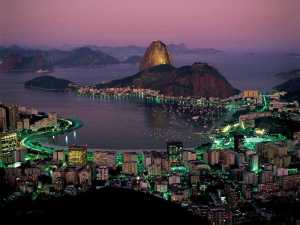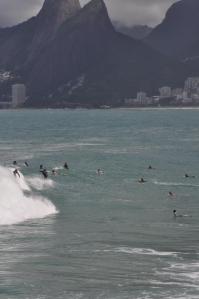Arquivo da categoria: Brazil
Florianópolis
Cursos que eu estava procurando:
http://continente.ifsc.edu.br/campus/index.php?option=com_content&view=article&id=59&Itemid=64
CAE ou Toefl:
http://www.professorparticulardeingles.org/simulados-gratuitos/17-simuladocae.html
http://www.professorparticulardeingles.org/simulados-gratuitos.html
http://www.professorparticulardeingles.org/simulados-gratuitos.html
http://www.australiancentre.com.br/intercambio/site/novazelandia/
Residencias:
http://casa.abril.com.br/materia/38-casas-pequenas-mas-muito-confortaveis#14
http://casa.abril.com.br/materia/reforma-na-casa-em-buzios
http://casa.abril.com.br/materia/28-fachadas-em-estilo-rustico
http://www.vitruvius.com.br/revistas/read/projetos/11.129/4061
Turismo:
Paranapiacaba
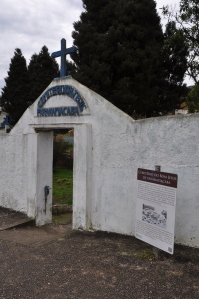 Paranapiacaba is a district of the municipality of Santo André in the Brazilian state of São Paulo. It is located approximately 61 kilometres (38 mi) by road southeast of the centre of the city of São Paulo, and about 12 kilometres (7.5 mi) east of Rio Grande da Serra. The word paranapiacaba means “where you will find the sea” in Tupi. There are about 1,200 residents.
Paranapiacaba is a district of the municipality of Santo André in the Brazilian state of São Paulo. It is located approximately 61 kilometres (38 mi) by road southeast of the centre of the city of São Paulo, and about 12 kilometres (7.5 mi) east of Rio Grande da Serra. The word paranapiacaba means “where you will find the sea” in Tupi. There are about 1,200 residents.
Paranapiacaba was established as a company town for the employees of São Paulo Railway, a privately owned British railway company. A large industrial complex, which the district is known for, lies off the main road from Rio Grande da Serra, on the way into the main village. The growth of this centre was facilitated by the railway, transporting cargo and people from inside Paulista to the port of Santos. The village design has been characterized as being panoptic.
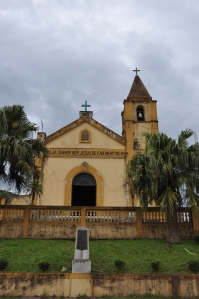 Vila de Paranapiacaba was established during the middle of the 19th century; it was designed by Jeremy Bentham according to a prison model style. It was founded by the British-owned São Paulo Railway Company. The construction of this zig-zag railway line in the hilly local terrain was considered a feat by the British engineers and workers at the time. The town was built when the company built the railway line to export coffee beans from the area through the port Santos. The village prospered for 30 years, until automated machinery replaced the funicular, which was labor-intensive. The village’s population suddenly declined and many of its buildings were abandoned. At one time, there were 4,000 workers, most of them British citizens. The last steam train in Paranapiacaba was deactivated for labor work in 1982.
Vila de Paranapiacaba was established during the middle of the 19th century; it was designed by Jeremy Bentham according to a prison model style. It was founded by the British-owned São Paulo Railway Company. The construction of this zig-zag railway line in the hilly local terrain was considered a feat by the British engineers and workers at the time. The town was built when the company built the railway line to export coffee beans from the area through the port Santos. The village prospered for 30 years, until automated machinery replaced the funicular, which was labor-intensive. The village’s population suddenly declined and many of its buildings were abandoned. At one time, there were 4,000 workers, most of them British citizens. The last steam train in Paranapiacaba was deactivated for labor work in 1982.
Paranapiacaba was designed in a prison model style. Because of its remoteness, the town has been well preserved. The buildings were all of English style (even the large homes were of Victorian style) built with wood and bricks. The houses in the town are all made of timber and looks like a mofussil area of Surrey. The town was laid out in the 1890s in a grid pattern. Even though Brazil attained independence in 1822, its architectural styles were influenced by Portuguese colonizers and by the British. The town is stated as having more English architecture than perhaps anywhere else in the country.
 The District of Paranapiacaba is known for its large industrial complex, which lies off the main road from Rio Grande da Serra, on the way into the main village, but is actually nearer Rio Grande da Serra. The growth of this industrial centre was facilitated by the railway, transporting goods to the port of Santos. The railway station’s clock tower is based on Big Ben in London. The locomotive stations, old British carriages and steam engines, cable station (funicular type), and workers’ cottages are all well preserved and form part of the museum which is open to the public.
The District of Paranapiacaba is known for its large industrial complex, which lies off the main road from Rio Grande da Serra, on the way into the main village, but is actually nearer Rio Grande da Serra. The growth of this industrial centre was facilitated by the railway, transporting goods to the port of Santos. The railway station’s clock tower is based on Big Ben in London. The locomotive stations, old British carriages and steam engines, cable station (funicular type), and workers’ cottages are all well preserved and form part of the museum which is open to the public.
 On the hill top above the village is the old Victorian style Castilino, which was once the residence of the Chief Engineer of the Railways, is now a museum known as the Centro Preservacao da Historia de Paranpiacaba, where old railway line maps and photographs are displayed. The museum has elegant furnishings and provides views of its surroundings. In the 1980s, a working steam engine from the turn of the 20th century ran several times a day, originally used to pull inclined trains from the coast. Visitors can view the working parts and watch them while the engine is running. Recivitas (Instituto pela Revitalização da Cidadania) created a free toy center and library here. The Funicular de Paranapiacaba railway museum was established in 1970, and today is one of the biggest attractions in the district. The Clube União Lira Serrano is also of note, and was founded in 1930 as a social club for the railway operators. The parish church, Capela do Alto da Serra or Igreja matriz de Paranapiacaba, opened for the first time on August 8, 1884.
On the hill top above the village is the old Victorian style Castilino, which was once the residence of the Chief Engineer of the Railways, is now a museum known as the Centro Preservacao da Historia de Paranpiacaba, where old railway line maps and photographs are displayed. The museum has elegant furnishings and provides views of its surroundings. In the 1980s, a working steam engine from the turn of the 20th century ran several times a day, originally used to pull inclined trains from the coast. Visitors can view the working parts and watch them while the engine is running. Recivitas (Instituto pela Revitalização da Cidadania) created a free toy center and library here. The Funicular de Paranapiacaba railway museum was established in 1970, and today is one of the biggest attractions in the district. The Clube União Lira Serrano is also of note, and was founded in 1930 as a social club for the railway operators. The parish church, Capela do Alto da Serra or Igreja matriz de Paranapiacaba, opened for the first time on August 8, 1884.
 In order to preserve the heritage status of Paranapiacaba as a well preserved railway town, the government of Brazil decreed it to be a historic district and initiated further steps to preserve its heritage status and encourage its development as a suburb of São Paulo and to promote tourism. The objective of this project is to preserve the natural, cultural, and industrial heritage and ensure economic progress of the town in particular and the region as a whole.
In order to preserve the heritage status of Paranapiacaba as a well preserved railway town, the government of Brazil decreed it to be a historic district and initiated further steps to preserve its heritage status and encourage its development as a suburb of São Paulo and to promote tourism. The objective of this project is to preserve the natural, cultural, and industrial heritage and ensure economic progress of the town in particular and the region as a whole.
The site was included in the 2000 and 2002 World Monuments Watch (WMW) by the World Monuments Fund, calling for investments to revitalize the village. With funding from American Express the Fund helped local stakeholders implement this effort. By 2008, the conservation efforts of the WMW team were successful in restoring Casa Fox (the Archive), the Castelinho (now a museum), the Lyra Serrano Club, and the Old Market. Further restoration works are continuing. The town has witnessed a dramatic change in its environment with much improved facilities also resulting in economic progress of the area.
Website: http://www.paranapiacabaecotur.com/
South America
 (South America) Planejando mochilão pela América Latina: Bolívia, Peru, Equador, Colômbia, Panamá, Costa Rica, El Salvador, Argentina, Venezuela e Guatemala! / Durante a viagem Ernesto Guevara e Alberto Granado percorrem: Argentina – Buenos Aires, Argentina – Miramar, Argentina – Piedra del Águila, Argentina – San Martin de los Andes, Argentina – Lago Frías (Río Negro), Chile – Temuco, Chile – Los Ángeles, Chile – Valparaíso, Chile – Deserto do Atacama, Peru – Cuzco, Peru – Lima, Peru – Pucallpa, Peru – San Pablo, Colômbia, Venezuela, Caracas. A viagem vai dos dia 4 de janeiro de 1952 a 26 de julho de 1952 e eles percorrem mais 12.425 km.
(South America) Planejando mochilão pela América Latina: Bolívia, Peru, Equador, Colômbia, Panamá, Costa Rica, El Salvador, Argentina, Venezuela e Guatemala! / Durante a viagem Ernesto Guevara e Alberto Granado percorrem: Argentina – Buenos Aires, Argentina – Miramar, Argentina – Piedra del Águila, Argentina – San Martin de los Andes, Argentina – Lago Frías (Río Negro), Chile – Temuco, Chile – Los Ángeles, Chile – Valparaíso, Chile – Deserto do Atacama, Peru – Cuzco, Peru – Lima, Peru – Pucallpa, Peru – San Pablo, Colômbia, Venezuela, Caracas. A viagem vai dos dia 4 de janeiro de 1952 a 26 de julho de 1952 e eles percorrem mais 12.425 km.
http://blog.malapronta.com.br/2014/05/15/5-cidades-baratas-para-conhecer-na-america-latina/
http://nomadesdigitais.com/26-lugares-de-tirar-o-folego-para-visitar-na-america-latina/
http://www.buzzfeed.com/ariellecalderon/surreal-places-to-visit-before-you-die#.vhx6ZzVoy1
Paraty (including Trindade)
 27th of September 2014: Paraty (or Parati) is a preserved Portuguese colonial (1500–1822) and Brazilian Imperial (1822–1889) town with a population of about 36,000. The foundation date for Paraty differs depending on the historian. Some say that in 1540/1560 there was already a small settlement devoted to Sao Roque in the Hill of Vila Velha (today called Morro do Forte); others mention 1597, when Martim Correa de Sá sets up an expedition against the Guaiana Indians in the Valley of Paraiba; others say 1600, when there was a settlement of “paulistas” from the “Capitania” of Sao Vale do Paraíba; Vicente (“Capitania”, district – designation of the first administrative divisions of Brazil , a hereditary system which originated the settlements to explore the New Land and settle the people ); others still say 1606, when the first settlers from the District of Itanhaém came.
27th of September 2014: Paraty (or Parati) is a preserved Portuguese colonial (1500–1822) and Brazilian Imperial (1822–1889) town with a population of about 36,000. The foundation date for Paraty differs depending on the historian. Some say that in 1540/1560 there was already a small settlement devoted to Sao Roque in the Hill of Vila Velha (today called Morro do Forte); others mention 1597, when Martim Correa de Sá sets up an expedition against the Guaiana Indians in the Valley of Paraiba; others say 1600, when there was a settlement of “paulistas” from the “Capitania” of Sao Vale do Paraíba; Vicente (“Capitania”, district – designation of the first administrative divisions of Brazil , a hereditary system which originated the settlements to explore the New Land and settle the people ); others still say 1606, when the first settlers from the District of Itanhaém came.
Monsignor José de Souza Azevedo Pizarro e Araújo, in his book Historical Memoirs of Rio de Janeiro and Annexed Provinces under the Jurisdiction of the Vice-Roy of the State of Brazil, mentions that the foundation of Paraty occurred “around the years 1600 or so”.
In any case, one can certainly state that in the beginning of XVII century, apart from the Guaianas Indians, there was already a growing number of Paraty natives settled here. 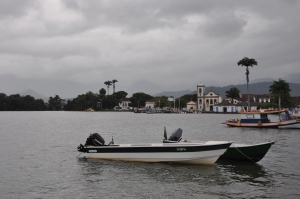
Pround 1640 the settlement called Paratii was transferred to the location where is today the historical center, between the rivers Paratiguaçu (today called Perequê-Açu) and Patitiba, donated by Maria Jácome de Mello. This benefactor imposed two conditions for the donation:
that a new chapel be built in honor of Nossa Senhora dos Remédios, and the safety of the gentle Guaianas Indians be preserved. Unfortunately, only the first condition was respected.
In 1660, the flourishing settlement rebels, demanding independence from Angra dos Reis and the status of village for itself. Thus, in 1667 it rose to the condition of Village of Nossa Senhora dos Remedios de Paratii. It is important to mention that Paraty was the first Brazilian city to have political autonomy by popular voting.
 Paraty becomes then a fairly busy trading post and its development was due to the folowing factors: its strategic position, at the bottom of the bay of Ilha Grande; the land route starting in Paraty to Minas Gerais, passing through the mountain to Guaratingueta, Freguesia da Piedade (now named Lorena), and through the Pass of Embu – the so called “Gold Route of Piedade”; and also due to its port, which became the second most important port in the country at the time.
Paraty becomes then a fairly busy trading post and its development was due to the folowing factors: its strategic position, at the bottom of the bay of Ilha Grande; the land route starting in Paraty to Minas Gerais, passing through the mountain to Guaratingueta, Freguesia da Piedade (now named Lorena), and through the Pass of Embu – the so called “Gold Route of Piedade”; and also due to its port, which became the second most important port in the country at the time.
In the early 1800s, for example, one record says that “160.914 heads of men and animals went through the city”: those were the riches being brought from Minas Gerais, first, and later the coffee from Valley of Paraiba being shipped to Europe, while slaves, spices and the European luxury arrived for the Coffee Barons.
There was intense use of the old Gold Route, the same one used before by Guaianas Indians who descended from Guaratingueta for fishing and preparation of fish flour. It is Friar Agostinho de Santa Maria who, in 1729, in his Historical Sanctuary writes about the importance of Paraty, as a place distant from Rio de Janearo, but will become quite populated due to the existence of a busy trade and commerce where there is a sea port , where a lot of people come from the inland villages in search of salt, oil, and wine, and more.
With the decadence of extraction and export of gold, around XVIII century, Paraty declines in importance.
With the Coffee Cycle, starting in the XIX century, the city relives, temporarily, its prosperous days of Portuguese colonial times.
In 1870, with the opening of a new link – by rail – between Rio and Sao Paulo, crossing the Valley of Paraiba, the old horseback trail through the Serra do Mar (the mountain range along the coast), lost its function, thus affecting dramatically the economic activity of Paraty.
A second factor for the decadence of the trade and the city of Paraty was the abolition of slavery in 1888, resulting in such an exodus that out of the 16,000 inhabitants in 1851, by the end of the XIX century there we only 600 old people, women and children left, keeping Paraty isolated from the rest of the country for decades.
While roads were being built in the rest of the country, the access to Paraty was done in the same old way as during the Portuguese occupation : by boat, coming from Angra dos Reis; or, from 1950 on , through a dirt road, coming down the mountain from Cunha, a road which could be used only during dry weather, which was partly the old route for transporting gold and coffee.
 Not even the attempt to build a railroad between Paraty and Guaratinguetá, during the first half of the XX century, was successful.
Not even the attempt to build a railroad between Paraty and Guaratinguetá, during the first half of the XX century, was successful.
This involuntary isolation was, however, what preserved not only the urban architectonic structure of the city, as well as its customs and lifestyle.
With the opening the Rio-Santos highway in the beginning of the 1980s, Paraty receives a new economic impulse. As in the previous phases of occupation, during the Gold or Coffee Cycles, a new cycle now starts : tourism, preserving its past history shown in the architecture, harmonizing with the gorgeous surrounding landscape of forests, 65 islands and more than 300 beaches.
PARATY – HISTORICAL CITY NATIONAL MONUMENT
It’s a publication by the Dept. of Communication of the Tourism and Culture of Paraty.
Events on the city: http://www.paraty.com.br/calendario.asp
Tips: Praia do Sono, Saco do Mamanguá, Pouso da Cajaíba, Ponta da Joatinga, Ilha do Cedro, Ilha de Meros, Caminho do Ouro.
 15th-17th of May 2015: Trindade is one of the most important destinations in the city of Paraty, State of Rio de Janeiro.
15th-17th of May 2015: Trindade is one of the most important destinations in the city of Paraty, State of Rio de Janeiro.
Located 30 km from Paraty’s clover, it is located within the Área de Proteção Ambiental do Cairuçu.
Its beautiful beaches, trails and waterfalls receive tourists from Brazil and the World. The village of Trindade offers many lodging options, shopping and gastronomy, always keeping a rustic style, typical of the place.
The beaches in Trindade are
- Praia Brava, Praia do Meio, Praia do Cepilho, Praia do Cachadaço/Piscina do Cachadaço (in the picture), Praia do Fora, Praia dos Ranchos e Cachoeira dos Codós.
São Carlos
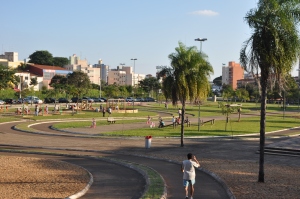 São Carlos is a brazilian city located in the State of São Paulo.
São Carlos is a brazilian city located in the State of São Paulo.
The city is an important regional industrial center with an economy grounded in industrials activities and in the agriculture (highlighting the production of orange, milk, chicken, sugar cane). Served by several bus and rail systems, São Carlos has a business unit of swidish multinational Leica Geosystems and units of production from some multinational companies, among them Volkswagen, Faber-Castell Electrolux, Husqvarna and Tecumseh. Some production units of domestic companies, among which Towels São Carlos, São Carlos Carpets, Paper São Carlos, Brazil Prominas, Opto Electronics, America and Engemasa.
Meeting local needs, and in some aspects, regional, there is a trade network and services distributed in high street stores, gas stations and convenience shopping center Iguatemi network. In the field of research, in addition to universities, are present in the city two technical development centers of Embrapa. 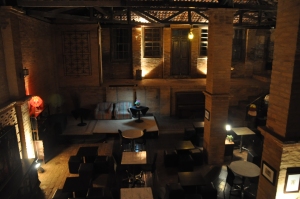
The two campuses of the University of São Paulo (USP), the Federal University of São Carlos (UFSCar) and the Instituto Federal de São Paulo (IFSP), and two other campuses of private universities, the University Center Central Paulista (UNICEP) make intense the academic activity in the municipality, which has a floating population of more than twenty thousand undergraduate and graduate students, most drawn from other cities and states. An event that attracts many students from outside is also called TUSCA. Another interesting event connected to the students is the Festival Contato (http://www.contato.ufscar.br/).
Since 2010 I visited São Carlos at least once a year and I can say it’s a great city for students. In 2015 I started living and working in the city and here it’s a list of places to visit:
Cartódromo: a great place to exercise and spent the late afternoon (first picture).
Sorveteria Beijo com sorvete de limonada suíça.
Catedral: a turistic atraction (last picture).
Espaço 7 (This amazing cafe from the picture: http://www.saocarlosoficial.com.br/empresaseservicos/?e=Espaco+7_D5R77NLJT7 or facebook page: https://www.facebook.com/CafeSeteArteHumor?fref=ts)
Museu da Tam
Parque Ecológico
Burger Joint
Casa do Café
St. Patrick’s Irish Pub
Another place which seems very nice in the city is Damha Golf Club (http://www.dgc.com.br/).
There are also some turistic places related to the time where coffee was very important to the brazilian economy.
Fazenda Pinhal – km 4,5 da (SPA-149) Rodovia Municipal Domingos Innocentini e acessar (SCA-276).
Fazenda Santa Maria – km 158 da (SP-215) Rodovia Luís Augusto de Oliveira. It’s served lunch for 30 reais and you can visit the house with a guide for 10 reais.
Fazenda Vale do Quilombo –
 Fazenda São Roberto – km 245 da (SP-318) Rodovia Engenheiro Thales de Lorena Peixoto Junior e (SCA-329) EM Abel Terrugi até Santa Eudóxia.Fazenda Lenda D’Água – km 11 da (SCA-334) EM da
Fazenda São Roberto – km 245 da (SP-318) Rodovia Engenheiro Thales de Lorena Peixoto Junior e (SCA-329) EM Abel Terrugi até Santa Eudóxia.Fazenda Lenda D’Água – km 11 da (SCA-334) EM da
Babilônia.
Sítio São Joaquim –
Sítio São João – km 7,8 Rodovia Municipal Domingos Innocentini à esquerda, mais 5 km de terra. Projetos de recuperação de áreas degradadas, principalmente da micro-bacia do Ribeirão Feijão e Programa de Educação Ambiental “Amigos do Ribeirão Feijão” com trilhas ecológicas, oficinas, brincadeiras, dinâmicas, cursos, cursos de férias com acampamento e aulas práticas, para Educadores Ambientais, Produtores Rurais, Alunos e Professores de escolas estaduais, municipais e particulares de São Carlos e Região.
Curitiba
 Curitiba is the capital and largest city of the Brazilian state of Paraná. The city’s population numbers approximately 1,760,500 people as of 2010, making it the eighth most populous city in the country, and the largest in Brazil’s South Region.
Curitiba is the capital and largest city of the Brazilian state of Paraná. The city’s population numbers approximately 1,760,500 people as of 2010, making it the eighth most populous city in the country, and the largest in Brazil’s South Region.
Curitiba’s current economy is based on industry and services and is the fourth largest economy in Brazil. The economy growth occurred in parallel to a substantial inward flow of Brazilians from other cities of the country, as approximately half of the population of Curitiba was not born in the city.
Curitiba presents one of the highest HDI of Brazil at 0.856, and in 2010 was awarded the Globe Sustainable City Award, given to cities and municipalities which excel in sustainable urban development around the world. According to the US magazine Reader’s Digest, Curitiba is the best “Brazilian Big City” in which to live. It is still considered the most “organized, clean and safe” Brazilian metropolis.
On the first time I visited Curitiba I went on november of 2009. I was planning to stay at the Curitiba Eco Hostel, but I was hosted by a friend.
I basically visited MON, where it was having an exhibition with photography and another about Vik Muniz. I went to the Shadow Bar, some restaurants and had a general idea of the city. On sunday I went to the market at Largo da Ordem and I also found a cultural centre, where a musical presentation was happening.
On 2012 I returned to visit the same friend who hosted me in 2009. I basically went to the turistic points and this time I stayed at a hostel.
Botanical Garden of Curitiba
http://www.curitiba-parana.net/parques/jardim-botanico.htm
MON
http://www.museuoscarniemeyer.org.br/
Torre Panorâmica de Curitiba
http://www.parquesepracasdecuritiba.com.br/destaques/torre-panoramica.html
UNILIVRE
Bosque Alemão
http://www.curitiba-parana.net/parques/alemao.htm
Ópera de Arame
http://www.curitiba-parana.net/opera-arame.htm
Passeio Público
http://www.curitiba-parana.net/parques/passeio-publico.htm
Teatro Guaíra
http://www.teatroguaira.pr.gov.br/
Universidade Federal do Paraná
http://www.ufpr.br/portalufpr/
Feira Largo da Ordem
http://www.feiradolargo.com.br/
Campinas
 Talking about Campinas is easy. It’s the place where I was born and spent most of my childhood.
Talking about Campinas is easy. It’s the place where I was born and spent most of my childhood.
I consider Campinas a very cultural city, loosing only for the big ones, like São Paulo, Rio de Janeiro and maybe Curitiba.
What I most like to do around there? Go out with my friends and see different attractions.
There are some popular bars in the Cambuí street, and there are some alternative places near Barão Geraldo. An example would be “Bar do Zé”, a place with music and also a lot of dedication from the people who attend (www.obardoze.com.br/). Not too far, there is also a small house called “Clube do Vinil”, if you find it interesting call the owner Charles: (19) 9141-1580 or send him an email clubedovinilcampinas@gmail.com. Next to “Torre do Castelo”, from the picture, you can also find lots of bars and restaurants like the “Woodstock” (www.woodstockmusicbar.com/).
Now, if the topic is food, I would recommend “Piola” (http://www.piola.it/), “Big Jack Hamburgueria” (http://www.bigjackhamburgueria.com.br/#/home), “Battataria Suíça” (http://www.battataria.com.br/barao/) or even “Cachorrão”, an amazing hot dog place in the middle of the street (http://vejabrasil.abril.com.br/campinas/comidinhas/cachorrao-34346). If you are a fan of originality you can search for “Caraiva” (http://www.caraivabar.com.br/) or “Almanaque” (http://www.portalbaraogeraldo.com.br/anunciantes/almanaque-cafe/). My favourite salad is from “Almanara” (http://www.almanara.com.br/). If you are searching for an Açaí, you must go to the Galerah’s Botequim (https://pt.foursquare.com/v/galehras-botequim/4cab50a2a6e08cfa1197a494).
If you are interested in photography you can try getting in contact with this people http://nucleodefotografiadecampinas.blogspot.com/p/sobre.html, like this, you can have a group to shoot around the city. 
Places to spend some time relaxing? I would suggest “Lagoa do Taquaral” (http://www.qype.com.br/place/303102-PARQUE-PORTUGAL-LAGOA-DO-TAQUARAL–Campinas), i love eating corn there and also there is “Centro de Convivência” (http://www.campinas.sp.gov.br/governo/cultura/teatros-auditorios/carlos-gomes.php).
For movie fans, I have my favorite locations too: “Cpfl Cultura” (http://www.cpflcultura.com.br/site/), MIS – Museu da Imagem e do Som (http://www.miscampinas.com.br/) or “Topázio Cinemas” (http://www.cinetopazio.com.br/home.php).
I hope you will like my city =)
Book: 1000 Lugares Fantásticos no Brasil
Today I was arranging some books, when I found one, which talks about Brazil. I thought of adding book information in the blog too, as long as the subject is travel.
 In the book’s cover says: “How to know Brazil in 10 days”? asks some of my foreigners friends when they come to visit me. The question makes me upset. How do I select some places against so many options? Fortunately, with this book things will turn up to be easier. You just need to open it and choose one of the suggestions sent by the internet from all over the country, accompanied with information and tips.
In the book’s cover says: “How to know Brazil in 10 days”? asks some of my foreigners friends when they come to visit me. The question makes me upset. How do I select some places against so many options? Fortunately, with this book things will turn up to be easier. You just need to open it and choose one of the suggestions sent by the internet from all over the country, accompanied with information and tips.
Now it’s up to you! How about discovering these many locations? After all, there are fantastic places in Brazil!
http://viajeaqui.abril.com.br/materias/7-belos-lugares-para-fugir-do-carnaval#3
http://nomadesdigitais.com/11-lugares-com-aguas-cristalinas-pelo-brasil-que-voce-precisa-conhecer/
http://www.hypeness.com.br/2015/03/alguns-destinos-incriveis-para-esquentar-o-seu-inverno/
São Paulo, Cidade da Garoa!
 São Paulo has a very important hole in my life, was the first city I went to live alone. It is the largest city in Brazil, the largest city in the western and southern hemisphere, and the world’s seventh largest city by population. São Paulo can please you in seconds or can make you hate it forever.
São Paulo has a very important hole in my life, was the first city I went to live alone. It is the largest city in Brazil, the largest city in the western and southern hemisphere, and the world’s seventh largest city by population. São Paulo can please you in seconds or can make you hate it forever.
If you are a person connected to the cultural background, São Paulo is the place for you. This is where the best theather’s plays in Brazil are held (>> guide of plays http://www.guiadeteatro.com.br/index.php?t=ok). While I lived there I went to see Spring Awakening (here is the site of the Theater>> http://www.apaacultural.org.br/sergiocardoso/home.php). I also recommend going to TUCA (>>http://www.teatrotuca.com.br/). Teatro Alfa (>> http://www.teatroalfa.com.br/) where I saw My Fair Lady. And Teatro Abril, where I saw The Phantom of The Opera.
São Paulo is where the alternative cinemas like “Cine Livraria Cultural” (>>http://www.cinelivrariacultura.com.br/cinelivrariacultura/index.asp), “Reserva Cultural de Cinema” and the no longer existent “HSBC Belas Artes” are, and where you can find Avenida Paulista, with a strong regional influence in commerce and finance. There are also some cinemas with vip space, an example is “Cinema Cinépolis” http://www.cinepolis.com.br/institucional/imprensa/. Most of the concerts happen in this city too, because of the Estádio do Morumbi or Via Funchal. São Paulo maintains strong international influence and is considered an Alpha – World City. The name of the city honors Saint Paul.
It houses several important monuments, parks and museums such as the Latin American Memorial, the Museum of the Portuguese Language, São Paulo Museum of Art, the Ibirapuera Park (from the picture) and Parque Estadual do Jaraguá (http://www.ambiente.sp.gov.br/parque-estadual-do-jaragua/). The city holds many high profile events, like the São Paulo Art Biennial, the Brazil Grand Prix Formula 1 São Paulo, São Paulo Fashion Week and the São Paulo Indy 300.
If you are a fan of libraries I suggest this one (>> http://www.livrariahaikai.com.br/). There is also a street called Augusta where exists various bars and another places (that I don’t recommend going), I visited this http://www.infernoclub.com.br/ but I don’t feel like coming back.
There are thousands of restaurants too. Try going during the Restaurant Week, a great gastronomic event: http://www.restaurantweek.com.br/
I can list some restaurants that I visited around the city: >> http://www.kebabsalonu.com.br/ or http://www.kebabel.com.br/blog/ for fans of Kebab >> http://www.barmadda.com.br/ Maddá, restaurant placed in Vila Madalena >> http://www.dolivinorestaurante.com.br/ or http://www.thefifties.com.br/ for hamburguer’s fans
People from the city of São Paulo are known as paulistanos, while paulistas designates anyone from the whole of São Paulo state, including the  paulistanos. The city’s motto, present in his official coat, consists of the Latin phrase “Non Ducor, Duco”, which means “I’m not driven, actually conduct”. The city, which is also colloquially know as “Sampa” or “Cidade da Garoa” (city of drizzle) is amazing, but be careful with the traffic, noise and, most of all, the pollution from the place.
paulistanos. The city’s motto, present in his official coat, consists of the Latin phrase “Non Ducor, Duco”, which means “I’m not driven, actually conduct”. The city, which is also colloquially know as “Sampa” or “Cidade da Garoa” (city of drizzle) is amazing, but be careful with the traffic, noise and, most of all, the pollution from the place.
Tips of what to do for free in São Paulo>> http://gratisemsp.blogspot.com/
>>Movie: http://www.youtube.com/watch?v=KTivdzpDqP0 Blindness





